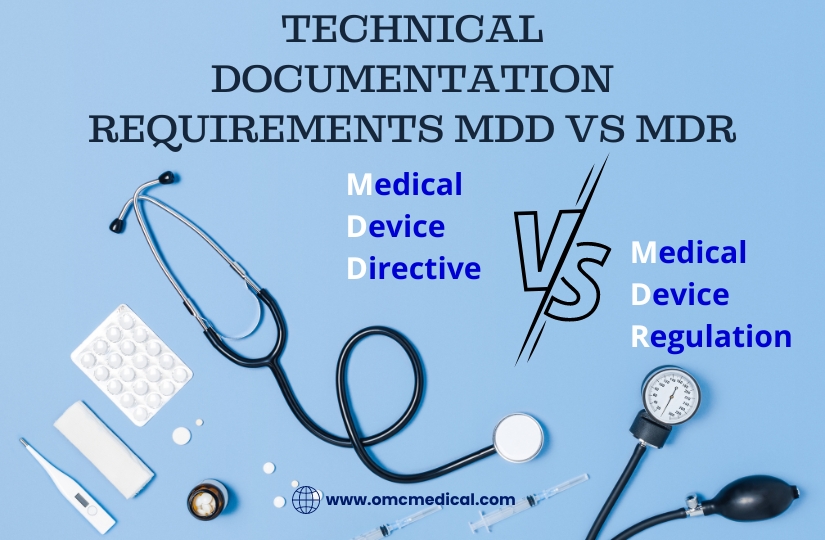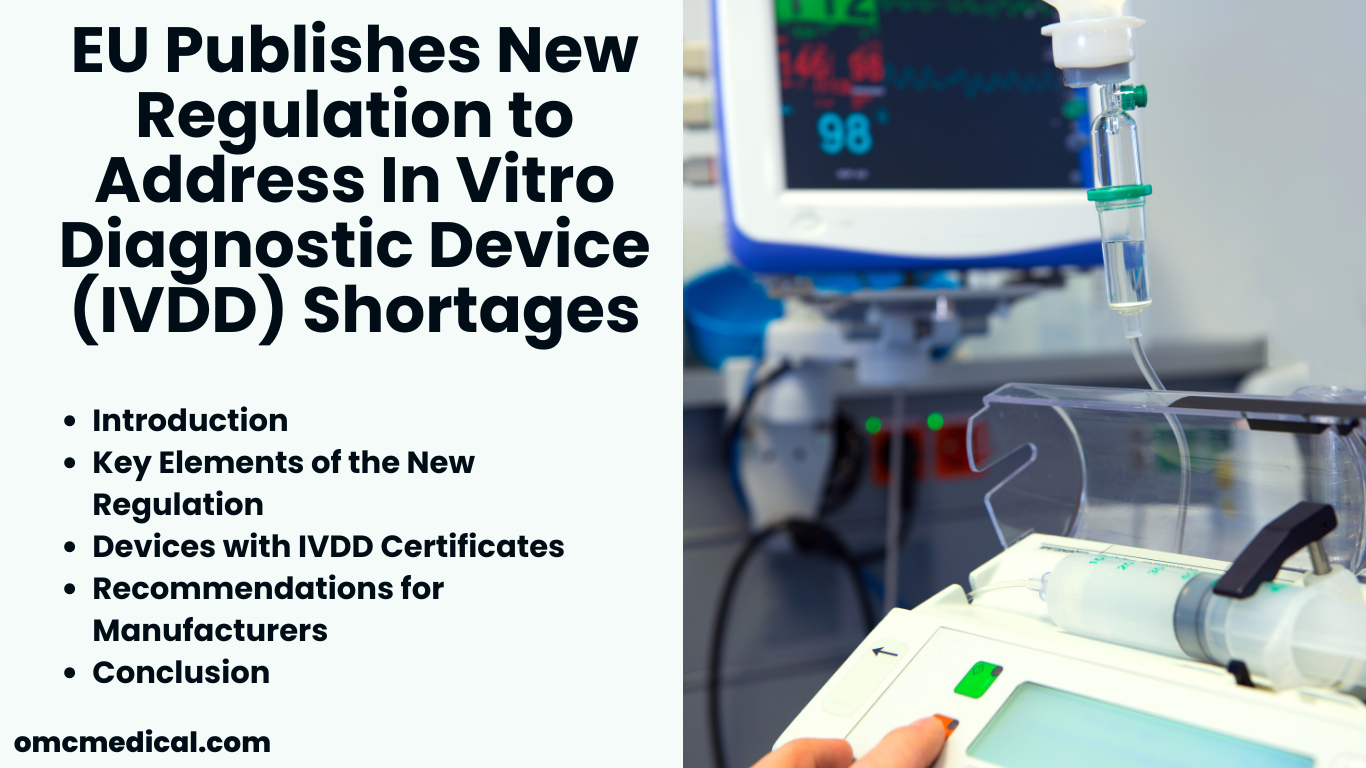Check out the difference between MDD vs MDR
MDD vs MDR
MDD
A MDD Technical documentation must include:
- A general device description, including any information on any planned variants
- Design drawings, details on the planned method of manufacture, diagram of components, sub-assemblies, circuits etc
- Descriptions and explanations are required to understand the abovementioned drawings and diagrams and the operations of the product
- Results of risk analysis and a list of standards that are applied in full or part (Standards are referred to in Article 5 MDD)
- Description of the solutions adopted to meet the essential requirements of the Directive if standards have not been applied fully. (Standards are referred to in Article 5 MDD)
- Sterility information, description, and methods of use of sterile products
- Results of design calculations and inspections carried out
- If the device is to be connected to other device(s) to operate as intended, then there must be proof provided to indicate that it conforms to the essential requirements when connected to any such device(s) having characteristics specified by the manufacturer
- Test Reports
- Clinical Reports wherever applicable and Clinical data as per Annex X of MDD
- Label and Instructions for use
MDR
All Technical documentation requirements of MDD must be presented for the MDR alongside the below additional list:
Device Description and Specifications
- Basic UDI-DI
- the intended patient population and medical conditions to be diagnosed
- contra-indications and warnings
- principles of operation of the device and its mode of action
- the rationale for the qualification of the product as a device
- the risk class of the device and the justification for the classification rule(s) applied
- an explanation of any novel features
- A description of the accessories for a device, other devices and other products that are not devices intended to be used in combination with it.
- a description or complete list of the various configurations/variants of the device
- a general description of the key functional elements, e.g., its parts/components
- a description of the raw materials incorporated into key functional elements and those making either direct contact with the human body or indirect contact with the body
- Technical specifications
- Reference to previous and similar generations of the device
Information to be supplied by the manufacturer
- A complete set of labels or labels on the device and on its packaging
- The instructions for use in the languages accepted in the country of sale
Design and Manufacturing Information
- information to allow the design stages applied to the device to be understood
- complete information and specifications, including the manufacturing processes and their validation, their adjuvants, the continuous monitoring and the final product testing
- identification of all sites, including suppliers, sub-contractors and manufacturing sites.
General Safety and Performance Requirements
- The general safety and performance requirements that apply to the device and an explanation as to why others do not apply
- The method or methods used to demonstrate conformity with each applicable general safety and performance requirement
- the harmonised standards, CS or other solutions applied
- the precise identity of the controlled documents offering evidence of conformity with each harmonised standard, CS or other method applied to demonstrate conformity
Benefit-Risk Analysis and Risk Management
The benefit-risk analysis, the solutions adopted, and the results of the risk management
Product Verification and Validation
The documentation shall contain the results and critical analyses of all verifications and validation tests and/or studies undertaken to demonstrate the conformity of the device with the requirements of this Regulation.
Pre-Clinical and Clinical data
- Results of tests
- If applicable: biocompatibility report, physical, chemical and microbiological characterisation, electrical safety and electromagnetic compatibility, software verification and validation,
- stability, including shelf life,
- performance and safety
- Where applicable, conformity with the provisions of Directive 2004/10/EC of the European Parliament and of the Council (1) shall be demonstrated
- Where no new testing has been undertaken, the documentation shall incorporate a rationale for that decision
- the clinical evaluation report and its updates and the clinical evaluation plan
- the PMCF plan and PMCF evaluation report, and if not applicable, justification of why a PMCF is not applicable
Additional information required in specific cases
Data of the tests conducted to assess safety, quality and usefulness on:
- Medicinal product used
- Medicinal products derived from human blood or human plasma
- Tissues or cells of human or animal origin or their derivatives
- Substances or combinations of substances that are intended to be introduced into the human body and that are absorbed by or locally dispersed in the human body
- CMR (carcinogenic, mutagenic, or toxic for reproduction) substances
- Endocrine-disrupting substances
A description of:
- Sterility or defined microbiological condition to be maintained
- Methods used in devices with measuring functions to ensure the accuracy as given in the specifications.
- Combination/configuration of devices connected to other devices (s) to operate as intended, including proof that it conforms to the general safety and performance requirements when connected to any such device(s) having regard to the characteristics specified by the manufacturer
Post Market Surveillance
- Post-market surveillance plan drawn up in accordance with Article 84
Post Market surveillance plan shall address:
- Information concerning serious incidents, including information from PSURs, and field safety corrective actions
- Records referring to non-serious incidents and data on any undesirable side-effects
- Information from trend reporting
- Relevant specialist or technical literature, databases and/or registers
- Information, including feedback and complaints, provided by users, distributors and importers
- Publicly available information about similar medical devices
The post-market surveillance plan shall cover at least:
- A proactive and systematic process to collect any information
- Effective and appropriate methods and processes to assess the collected data
- Suitable indicators and threshold values shall be used in the continuous reassessment of the benefit-risk analysis and the risk management
- Effective and appropriate methods and tools to investigate complaints and analyse market-related experience collected in the field
- Methods and protocols to manage the events subject to the trend report
- Methods and protocols to communicate effectively with competent authorities, notified bodies, economic operators, and users
- Reference to procedures to fulfil the manufacturer’s obligations
- Systematic procedures to identify and initiate appropriate measures, including corrective actions
- Effective tools to trace and identify devices for which corrective actions might be necessary
- A PMCF plan, or a justification as to why a PMCF is not applicable
The PSUR referred to in Article 86 and the post-market surveillance report referred to in Article 85
Disclaimer: Regulations/legislations are subjected to changes from time to time and the author claims no responsibility for the accuracy of information.







